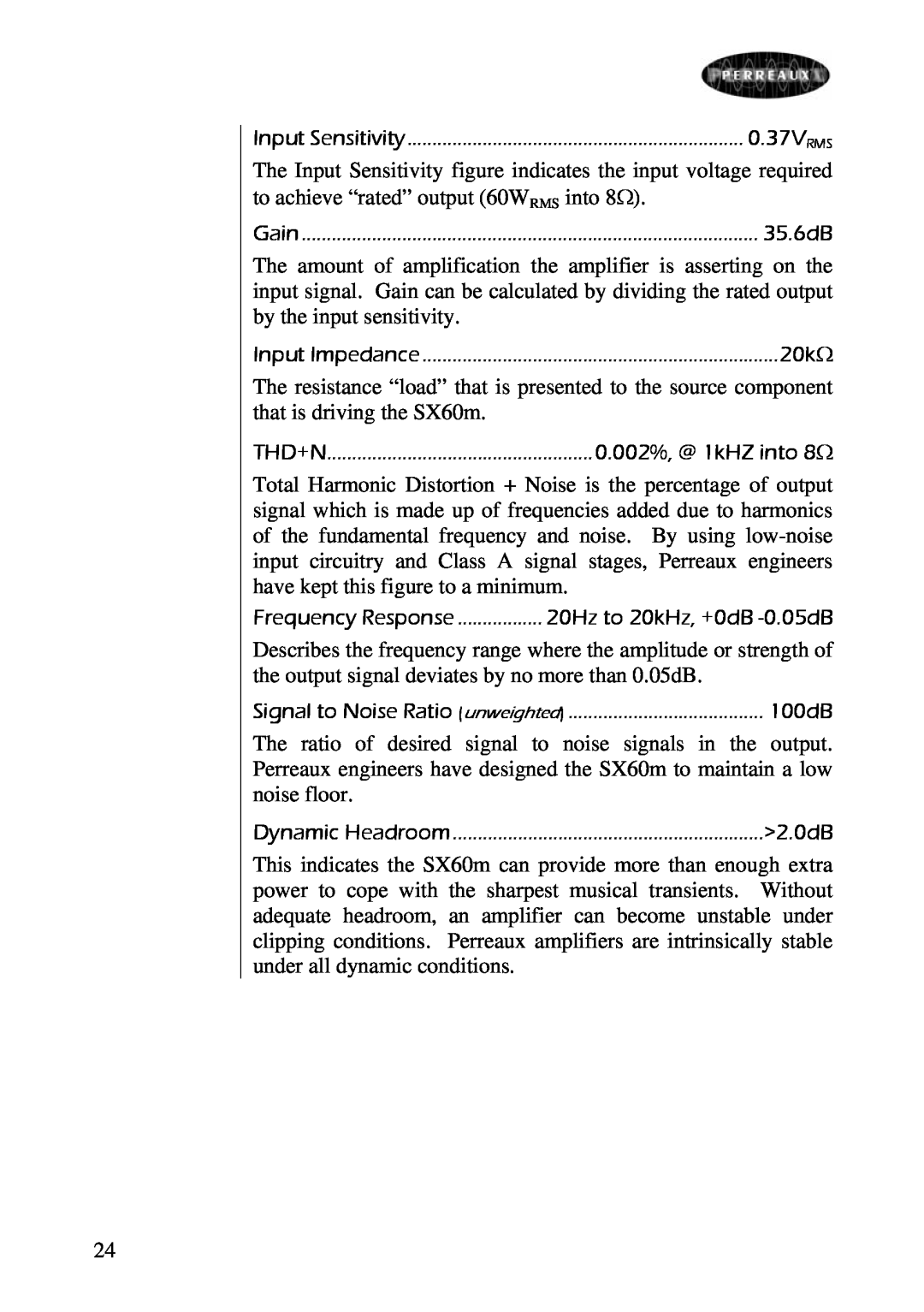
Input Sensitivity | 0.37VRMS |
The Input Sensitivity figure indicates the input voltage required to achieve “rated” output (60WRMS into 8Ω).
Gain | 35.6dB |
The amount of amplification the amplifier is asserting on the input signal. Gain can be calculated by dividing the rated output by the input sensitivity.
Input Impedance | 20kΩ |
The resistance “load” that is presented to the source component that is driving the SX60m.
THD+N | 0.002%, @ 1kHZ into 8Ω |
Total Harmonic Distortion + Noise is the percentage of output signal which is made up of frequencies added due to harmonics of the fundamental frequency and noise. By using
Frequency Response | 20Hz to 20kHz, +0dB |
Describes the frequency range where the amplitude or strength of the output signal deviates by no more than 0.05dB.
Signal to Noise Ratio (unweighted) | 100dB |
The ratio of desired signal to noise signals in the output. Perreaux engineers have designed the SX60m to maintain a low noise floor.
Dynamic Headroom | >2.0dB |
This indicates the SX60m can provide more than enough extra power to cope with the sharpest musical transients. Without adequate headroom, an amplifier can become unstable under clipping conditions. Perreaux amplifiers are intrinsically stable under all dynamic conditions.
24
